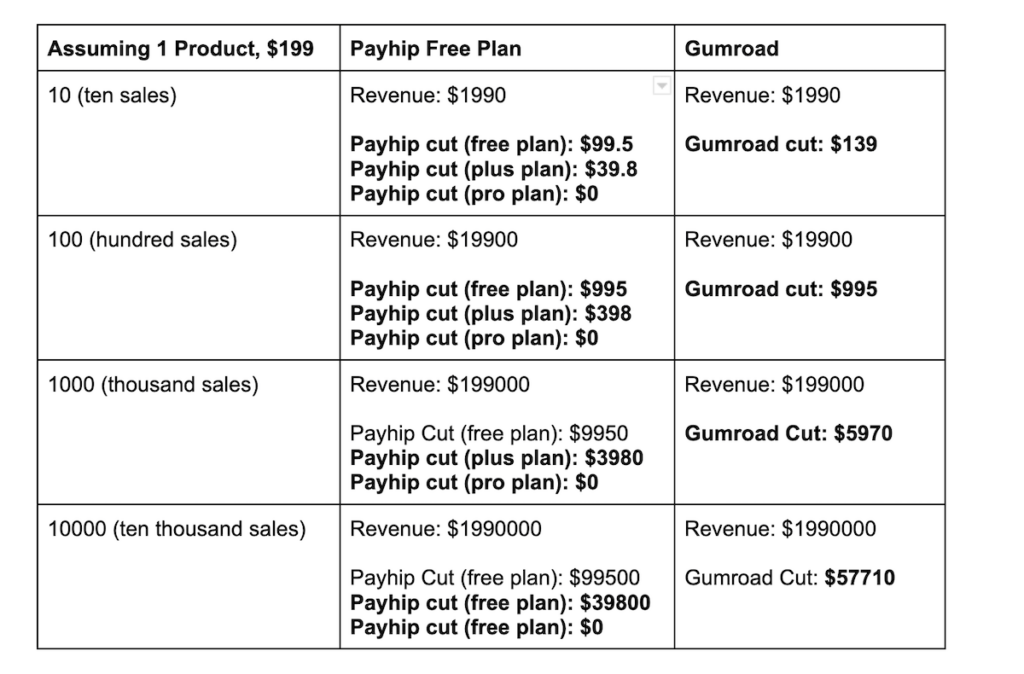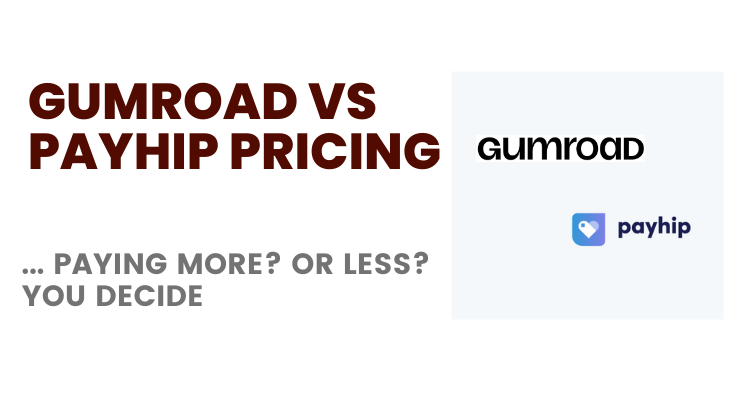When you first look at Gumroad Vs Payhip pricing, you’d think that both the platforms are free (except for transaction charges that PayPal and Stripe will take — true for any platform).
They are not the same.
Payhip and Gumroad pricing are “fundamentally” different from each other. Prepare to do some math (with a few assumptions):
Let’s assume that you sell an online course worth $199.
Now, see how that plays out, depending on the number of sales for your online courses
Gumroad is free (but takes a varying cut based on lifetime earnings) — 9% to 2.9%.
Meanwhile, Payhip has:
Free plan ($0 per month, 5% fee)
Plus plan ($29 per month, 2% fee), and
Pro plan ($99 per month, 0% fee)
In terms of your revenue and the actual fees you’ll pay on either Payhip or Gumroad, this is how it’ll look like:
How Payhip and Gumroad Pricing Compare [a tabular comparision]

How to Decide Between Payhip and Gumroad
The eCommerce platform — and starting off by selling digital products (including online courses) on either of the platforms is easy enough.
It’ll seem that way at least. In reality, it’s hard to sell digital products.
The last thing you’d want is any sort of “friction” when it comes to critical things you need to do for your success as an entrepreneur or content creator.
In short, you don’t want to find yourself:
- Paying more when you shouldn’t have to.
- Find that you can’t customize your store or apply your own brand
- Inability create subdomains (for branding, ease of memory, integrating it with your existing website)
- Realize that you have limitations on what kind of digital products you can sell.
- Worry about how the course delivery experience is (for online courses) or the general digital product delivery (for regular digital downloads or purchases).
Payhip gives you all of that (and more) while still being free. That’s also the reason I moved my courses and a built a new storefront over to Payhip (take a look).
Read:
Critical features online course platforms should have.
Payhip Vs Gumroad: Summary & Important things to note
- Gumroad: You’ll pay 9%, all the way up to 2.9% for every sale you make, forever (as long as you are on the platform). No other options.
- Payhip: Start for free. When you hit a particular milestone (say $2000 or so), switch to one of paid Payhip plans to avoid paying any fees whatsoever.
- Payhip provides you with features that help you customize your storefront, apply branding, create subdomains, and sell. Gumroad also gives you these, except for storefront customization.
- You can’t sell some products on Gumroad (like physical products. Plus, there are limitations even on a few types of digital products you can sell on Gumroad. Payhip doesn’t have any limitations.
- Gumroad has a marketplace. Payhip doesn’t.
Looking for more options than just Payhip or Gumroad? Check these out:
Choosing Online Course Platforms: Podia Vs WordPress Vs Shopify Vs Webflow
eCommerce Platforms to Sell Digital Products: 3 Free Options
Watch this video on How to Sell Online Courses on Payhip
What will you go for? Payhip or Gumroad? Let me know by joining the fetchprofits community at LinkedIn. Or follow me on Twitter to share your thoughts.

